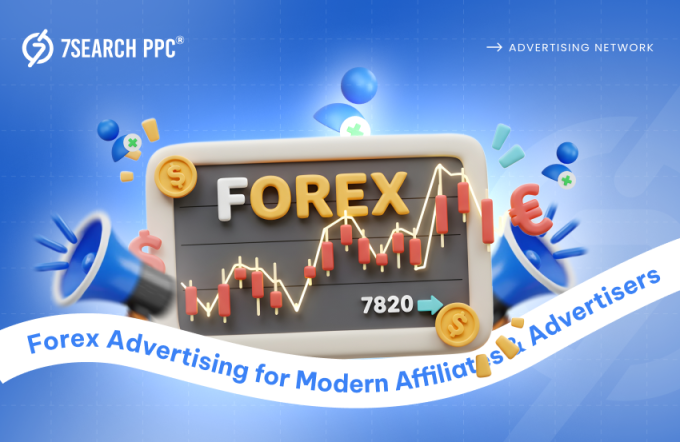Hey there! Our smart readers. We hope that all of you are doing great. Today, we are back again with another amazing topic – “Ad Mediation.” Now, this is a topic that requires your proper focus.
Let us give you an overview of what we will discuss in today’s blog. We will understand the basics of ad mediation, discover its benefits, and learn how you use ad mediation in an optimal way so that you, as a publisher, can get great results. Let’s not wait any further and dive right into this blog.
Defining And Understanding Ad Mediation
Ad mediation can be defined as a monetization solution that allows publisher ad developers to manage multiple advertsing platforms from a single software development kit (SDK).
The primary goal of ad mediation is to maximize monetization and increase the effective cost-per-mille (eCPM), ad fill rates, and ad fill rates. Ad mediation platforms optimize the searches for ad networks. This is pretty beneficial for publishers as they do not need to do so manually.
Ad mediation generally uses a formula that can be used to optimize ad fill rates, eCPM, or both. The formula is – ad requests * fill rate * eCPM.
How Does Ad Mediation Work?
Ad mediation software searches for the best ad networks and sends ad requests to increase ad fill rates. Let’s discuss the steps for this process:
- The ad mediation platform’s SDK is integrated into their platform by the publisher. This enables them to gather insights about the audience.
- Whenever the platform is used, SDK requests an ad from the monetization platform.
- Then, the platform picks the best ad format from its network pool. The choice of the ad is based on revenue generation, which means the ad that generates the most revenue gets selected.
- Finally, the chosen ad is displayed for the generation of revenue for the publisher.
Uses Of Ad Mediation And Bidding Types?
You must be thinking about the use of these ad mediation platforms. Worry not because we will explain it to you. Its main goal is to increase the publisher’s ad revenue.
An Ad mediation platform connects several ad networks through a single integration. After this, ad mediation is performed with the data generated from each ad network, and the space is filled with the highest possible CPM.
Ad mediation generates revenue by selling ads through two kinds of bidding. These types are the following:
Waterfall Bidding
This is the older one of the two. Waterfall bidding works on the principle of prioritizing the ad networks on the basis of ad revenue. When there is a request to fill an ad, the highest-performing platform is selected by the ad mediation platform until the demand has been met.
Header Bidding
In the header bidding method, multiple advertisers are involved in real-time bidding for the ad space. The mediation platform selects the high-paying advertisers, and the publishers can get the highest possible amount for their ad spaces.
What Are The Benefits Of Ad Mediation?
There are various advantages of ad mediation. These include:

Enhances Ad Fill Rates
Ad fill rates can be boosted by increasing the number of ad inventory sold. The most important thing is that publishers can allow multiple ad networks to access their ad inventory, which allows the advertisers to bid for their ad space. Competition is encouraged between the advertisers, and the advertiser with the highest bid gets the ad space.
Effective Management Structure
Another important feature of ad mediation is that it allows publishers to manage various ad networks from a single SDK platform. This is a great thing as it removes the need to manage each ad network individually.
Increased Cost-Per-Mille (CPM) Rate
This is another great benefit. When advertisers compete for ad space, the CPM rate goes up, which results in great revenue generation for the publisher. When there is no choice between ad networks, then there will be no option but to sell the ad inventory to a single offer.
Step-By-Step Guide For Ad Mediation
- Identify Advertising Platform/s You Want To Connect With: The first and foremost thing to do is you should research various ad networks and then identify those that you want to connect with at the SDE platform. This allows the publishers to make the best money possible due to various offers from the advertisers.
- Signing Up: The next step is to register with all the ad networks you have decided to connect with. This requires sharing your basic information about your website or app with those networks and agreeing to the terms and conditions. After the registration is completed, you will get access to the networks’ SDKs and platforms.
- Integration Of SDKs: After the registration with the ad networks of your choice is done, you now need to integrate their SDKs into your website/app. For this, each ad network provides documentation of the code. The integration process may vary depending on the platform (web, android, iOS), so keep that in mind. After the integration, SDK will handle the requests and optimize the placement of the ads for the website.
- Configuration Of Ad Units: Ad units represent specific locations on your website or app where the ads will be shown. To maximize your revenue, publishers should adjust the ad settings, such as ad formats, ad sizes, targeting options, eCPM (effective cost per mile) values, and geographic coordinates.
- Testing: This is a very important step because you should know whether the services that you provide are working properly or not. You should ensure that the services of online advertising and/or paid advertising through all the ad networks are being served properly. Test it on various devices and network settings.
- Analysis And Monitoring: You should regularly keep an eye on the performance of your ad campaigns so that you can decide which ad network performs the best. This will allow you to make effective decisions and allocate more and better resources to those ad networks that have shown better performances than the others.
- Stay Updated: Finally, you should stay updated with the industry trends and the developments that take place in your niche. This allows you to make use of newly available opportunities to the best of your abilities.
Conclusion
In conclusion, we just want to say that ad mediation is a very powerful tool that can be used by publishers to enhance their revenue. In order to generate huge revenue, you must follow the outlined steps, and your earnings will skyrocket.
Frequently Asked Questions (FAQs)
What do you understand by ad mediation?
Ans. Ad mediation is a monetization solution that connects several ad networks and allows publishers and developers to manage multiple ad networks from a single software development kit.
What are the two main types of bidding that are used in ad mediation?
Ans. The two main types of bidding used in ad mediation are waterfall bidding and header bidding.
What do you understand by waterfall bidding?
Ans. Waterfall works on the principle of prioritizing the ad networks on the basis of ad revenue. In this type of bidding, the ad platform with the highest bid gets the ad space.
What are some benefits of ad mediation?
Ans. Some great benefits of ad mediation are – enhanced ad fill rate, increased CPM (cost per mille) rate, and effective management of several ad networks through a single SDK ( software development kit).
What should be the first step for effective ad mediation?
Ans. For effective ad mediation, the first step should be doing proper research on various ad networks so that you can identify the ones that you want to connect with.


















